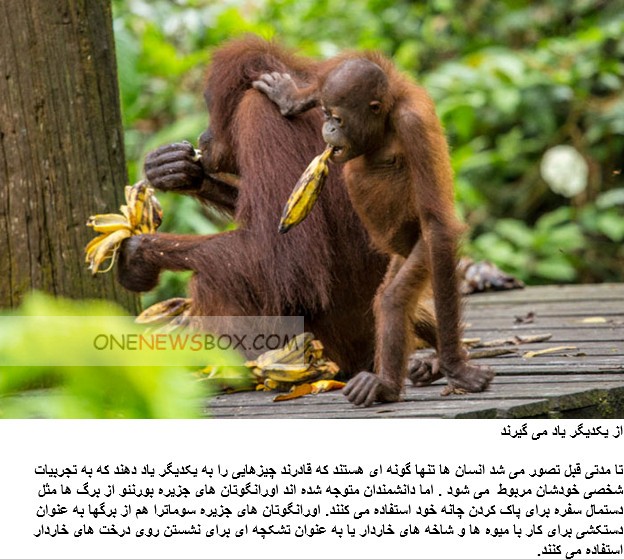It wasn’t so long ago that humans believed we were the only species that taught each other things that related to our own specific experiences. Not so, according to Orangutan Foundation International. In fact, orangutan populations in Borneo “use handfuls of leaves as napkins to wipe their chins while orangutans in parts of Sumatra use leaves as gloves, helping them handle spiny fruits and branches, or as seat cushions in spiny trees.”
Disclaimer: Orangutans have a very close evolutionary connection to humans. Here’s a clear breakdown: Genetic similarity: Humans share about 97% of our DNA with orangutans, making them one of our closest living relatives (after chimpanzees and bonobos). Evolutionary connection: Orangutans, humans, gorillas, and chimpanzees all belong to the Hominidae family—the “great apes.” Humans and orangutans share a common ancestor that lived roughly 12–16 million years ago. Behavioral similarities: Orangutans are highly intelligent, capable of using tools, solving problems, and even learning aspects of human language when taught in captivity. They have complex social behaviors, though they are more solitary than other great apes.

